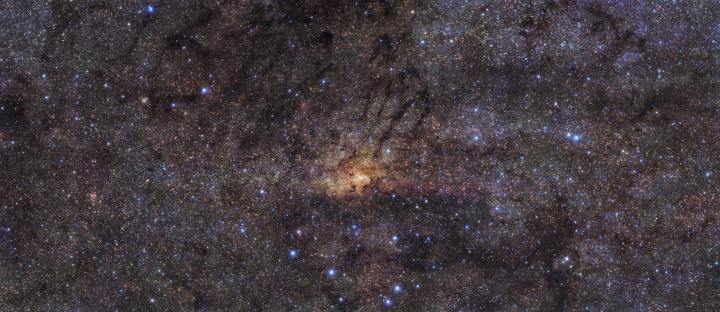
This beautiful image is the most detailed observation yet of the center of our galaxy, collected by the European Southern Observatory’s Very Large Telescope. To see all the spectacular details of the heart of the Milky Way, have a look at the full-size high definition image.
The image isn’t only pretty though. It has also taught astronomers more about the history of star formation in our galaxy. The majority of stars in the Milky Way formed when the galaxy was young, between 8 and 13.5 billion years ago. Around 80% of the stars we see in the central region were formed in this time, in a dramatic burst of star creation. Following this, there was a period of around six billion years in which star formation dropped to very low levels. Then another burst of star formation occurred around one billion years ago, including the formation of massive stars with a combined mass of as much of tens of millions of our sun.
This information surprised astronomers, who had not realized the extent to which star formation varied over different periods in the Milky Way’s history. “Our unprecedented survey of a large part of the Galactic center has given us detailed insights into the formation process of stars in this region of the Milky Way,” lead researcher Rainer Schödel from the Institute of Astrophysics of Andalusia in Granada, Spain, said in a statement. “Contrary to what had been accepted up to now, we found that the formation of stars has not been continuous,” added Francisco Nogueras-Lara, also of the Institute of Astrophysics.
During periods of intense star formation, the galaxy would have looked strikingly different from how it does today. It would be similar to a starburst galaxy, which displays exceptionally high rates of star formation. And as the massive stars form quickly, they also die quickly in epic supernova events. “This burst of activity, which must have resulted in the explosion of more than a hundred thousand supernovae, was probably one of the most energetic events in the whole history of the Milky Way,” Nogueras-Lara said.
The research is published in the journal Nature Astronomy.



